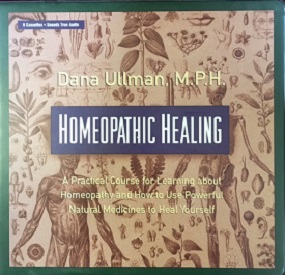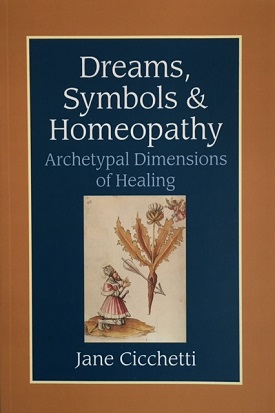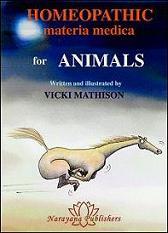Organon of the Medical Art – Brewster-O’Reilly/Decker translation (paperback) by SAMUEL HAHNEMANN MD [#HAHMEDPB]
$28.00
Description
The translators have included a listing of many of the most important words in the original German along with a discussion of the precise meaning in English for these words.
This is a very important book for people who are seriously interested in the study of homeopathy.
This book is also available in a high quality hardback edition. Although it costs more, it IS worth it!
Book Review
The following book review is reprinted from HOMEOPATHY TODAY (December 1996) with the permission of the National Center for Homeopathy
Reviewed by Julian Winston
The Organon of Hahnemann is the cornerstone of homeopathy. In it, Hahnemann takes us on a philosophical journey through the age-old questions of health, disease, and healing, speculates on the ideal system to achieve these ends, and describes the system he found which meets these criteria. Along the way he answers most questions any homeopath could have.
If one were stranded on a desert island with this book, one could develop the unique materia medica that would be found on the island, and learn how to apply these substances as healing agents. During Hahnemann’s lifetime, the book went through six successive editions-each one honing the system just a bit more. But through a quirk of history Hahnemann’s last edition of 1842 was unseen until 1921 when it was brought to light by Richard Haehl, “translated” into English by William Boericke, and published- finally-by Boericke and Tafel.
What is important for us to understand now is that when most of the homeopaths of the late 19th and early 20th century (Kent, Close, Fincke, Boger, Gladwin, etc.) were learning this book, they were working, generally, with the 5th edition of 1833 that was translated by Robert Ellis Dudgeon in 1849. Even when Boericke obtained the 6th edition in 1921, his “translation” consisted of annotating the changes that Hahnemann made to the 5th edition and using the Dudgeon translation as the base text.
Until the advent in 1982 of the Kunzli, Naude, and Pendleton translation from the original 6th edition, we were all using a translation that was done in the middle of the last century The result is that we were reading a book that was translated from the ponderous German of the times of Goethe into the ponderous English of the Victorian era.
And while the Kunzli, Naude, Pendleton translation brought us one step closer to what Hahnemann was saying, it did not translate the long Introduction-which places the work into historical context. The most complete Organon to date is probably the one published by Haug and edited by Josef Schmidt-who carefully transcribed the total text of the 6th edition. But this work, though complete, is still in German.
This latest edition being reviewed here, by Wenda Brewster O’Reilly and Steven Decker, is the first English translation that has looked at the whole book, and studied what is being said, as well as HOW it was being said.
Says Wenda of the Dudgeon translation: “I thought I had difficulty understanding his concepts because the sentence structure was so difficult. That was true to some extent, but now I realize that a lot of the obscurity was in the translation.”
Both the Dudgeon/Boericke and the Kunzli translations were not literal but “conceptual”-they got the main point across but with language that left out the color and flavor of Hahnemann’s words. While the older editions have literally translated Hahnemann’s grammar but not his words, the new edition by Decker and O’Reilly has done the reverse- the grammar is easy and modern and the words are a literal translation of Hahnemann’s. As the authors say in the introduction:
“At every turn, translators are faced with the problem of choosing between translating a particular word consistently throughout a text or translating each word in the text according to context. Previous translators have opted primarily for translation according to context. However, one way in which readers come to understand Hahneman’s precise meaning is by seeing how he uses certain key words in various contexts. Steven and I approached this problem from different directions. Steven drew on a wide selection of words in the English language to find a particular word that could span the various meanings of a given German word. We then worked together to define key terms in the Glossary so that readers can fully understand the nuances to be associated with particular terms. In other words, through the Glossary definitions, we are giving readers the opportunity to assign the full meaning of a given German word to the English word being used to translate it. One example is the use of ‘malady’ throughout the text. ‘Malady’ is being used to translate the German word Uebel, which has two meanings in German; it means both illness and evil. There is no word in English that immediately conveys both of these meanings to the reader. ‘Malady’ has been assigned the task of conveying both of these meanings and has been defined as such in the Glossary … Another frequently-encountered problem in moving from one language to another is that different languages carry different ways of looking at something, conceptually dividing things into smaller or larger units. Where one language may use several words, another language may use only one. For example, English has the terms ‘curing’ and ‘healing’ which originally had different meanings. ‘Cure’ referred to medical intervention while ‘healing’ referred to the human organism’s own efforts to recover from disease or injury German, however, has only one term (Heil-) that covers both healing and cure, and which can refer to anything that is remedial or therapeutic. Any such differences between Hahnemann’s original terminology and the translation are discussed in the Glossary. As a result, readers will be able to better know and understand what Hahnemann wrote and what he meant.”
Another example: the German word “Wesen” refers to a dynamic entity which is the essence of something. Even though it can’t be touched, a Wesen is real; it has a substantial presence. Hahnemann uses the word in reference to the essence of a disease and the essence of a medicine. He also refers to the vital force as a Wesen. He wants the reader to understand that these three things are all of the same nature. This idea is lost when Dudgeon translates it in Paragraph 7 as the internal essence of disease, as an immaterial being (in Paragraph 10), as a thing (referring to disease in Paragraph 13), as the inner nature of medicine (in Paragraph 20), as the curative principles in medicine (Paragraph 21), and as the inner nature of life in health and disease (paragraph 54). Yet, they are all the same word!
Then, there is knowledge that is an intellectual knowledge (wissen) and the knowledge that is deeply personal and gained through experience (kennen). Dudgeon translates both as “to know” whereas they are two different things.
So this new translation proceeded from a literal (in German) to a literal in English. The first paragraph reads:
Des Arztes hochster und einzuger Beruf ist, kranke Menschen gesund zu machen, was man Heilen nennt.
The literal translation is:
The physicians highest and only calling is [the] sick [humans] sound to make, which one curing calls.
And the final translation becomes:
The physician’s highest and only calling is to make the sick healthy, to cure, as it is called.
Furthermore, the text has been made easier to understand by the addition of headings and sub-heads (the paragraphs contain a summary at the beginning, i.e., Paragraph 8 is summarized as: “When all the symptoms of the disease have been lifted, the disease is also cured in the interior”); the sections are named (“Understanding Disease: Paragraph 72-81”); when a paragraph has several “ifs” and “therefores,” the key points are numbered to make it easier to understand; there is an 84-page Glossary; and a 39-page comprehensive index is included.
The proof, however, is in the reading and use of the book. I received a preliminary manuscript several months ago and have been using it to teach Organon to the second year class at the Wellington College of Homoeopathy in New Zealand, With any paragraph, I can have the students read it from the Dudgeon/ Boericke translation or from the Kunzli translation, and then I read it from the Decker/O’Reilly translation. The response is always the same: “Why that’s so clear! Why didn’t they (Dudgeon/Boericke/ Kunzli) say that?”
This is the translation we have all been waiting for. It was worth the wait and certainly worth the price. Steven Decker and Wenda Brewster O’Reilly have done a great service for the English speakers of homeopathy. A new standard has been set.






Reviews
There are no reviews yet.